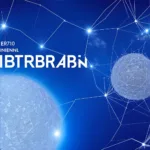
Ethereum, network fees, deflationary supply, and layer 2s are all crucial factors in the current state of the Ethereum network. According to a recent report by IntoTheBlock, Ethereum is entering a new phase marked by low network revenue generated from fees, which is testing the narrative of its native token, ether’s deflationary supply. With the income from network fees dropping to its lowest level since April 2020 and being down 90% from its high in May, Ethereum’s “ultrasound money” thesis is put to the test.
High Transaction Costs and Gas Fees
High transaction costs, also known as gas fees, were a significant complaint during the bull market. The network was prone to clogging due to increased activity from non-fungible token (NFT) trading and decentralized finance (DeFi) yield farming. Users were often frustrated with the high fees and slow transaction times, leading to calls for improvements in the Ethereum network.
Layer 2s to the Rescue
The proliferation of layer 2s has helped Ethereum scale and increase its capacity, bringing down fees and making it more accessible to users. Layer 2s are secondary networks that operate on top of the Ethereum blockchain, allowing for faster and cheaper transactions. As more users migrate to these layer 2s, the Ethereum network becomes less congested, leading to a significant decrease in network fees.
Impact on ETH’s Supply
The decrease in fees has had a direct impact on ETH’s supply, keeping it inflationary by burning fewer tokens than new issuance. This challenges the deflationary supply narrative, as the reduced network fee revenue means that fewer tokens are being burned. As a result, the supply of ether remains inflationary rather than deflationary, which could have implications for the token’s value in the long term.
Transition Period for Ethereum
This period represents a major transition for Ethereum, trading off high revenues and deflationary supply for the promise to attract mainstream users through layer 2s. As speculative activity dries up and users continue migrating to layer 2s, network fee revenue is likely to stay low. This change is essential for Ethereum to maintain its position as a leading blockchain platform, as it needs to cater to the growing demand for fast, cheap, and scalable transactions.
Attracting Mainstream Users
The reduction in network fees and the introduction of layer 2s are crucial steps in attracting mainstream users to the Ethereum network. By providing a more user-friendly experience with lower costs and faster transactions, Ethereum can appeal to a broader audience, including those who may have been deterred by high fees in the past.
Future Outlook
As Ethereum continues to evolve and adapt, it is crucial for the platform to strike a balance between maintaining a deflationary token supply and providing a scalable, user-friendly experience. The implementation of layer 2s and the reduction in network fees are positive steps in this direction, but the platform must continue to innovate and improve to remain competitive in the rapidly changing world of blockchain technology.
In conclusion, Ethereum is currently undergoing a significant transition, marked by low network fees, deflationary supply challenges, and the rise of layer 2s. This change is essential for the platform to attract mainstream users and maintain its position as a leading blockchain platform. While the short-term impact on ether’s supply and value may be uncertain, the long-term outlook for Ethereum remains promising as it continues to adapt and evolve in response to user needs and market demands.




